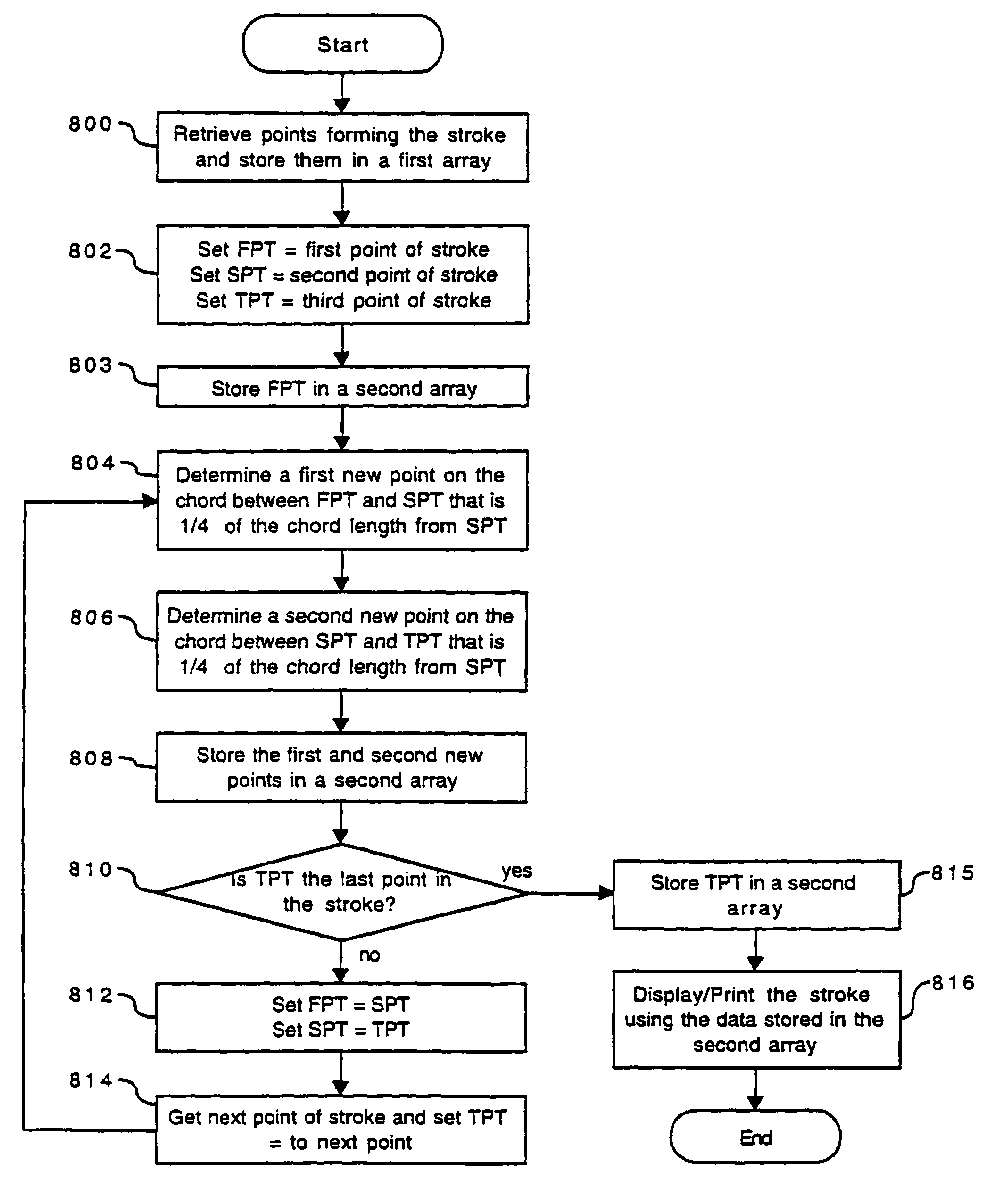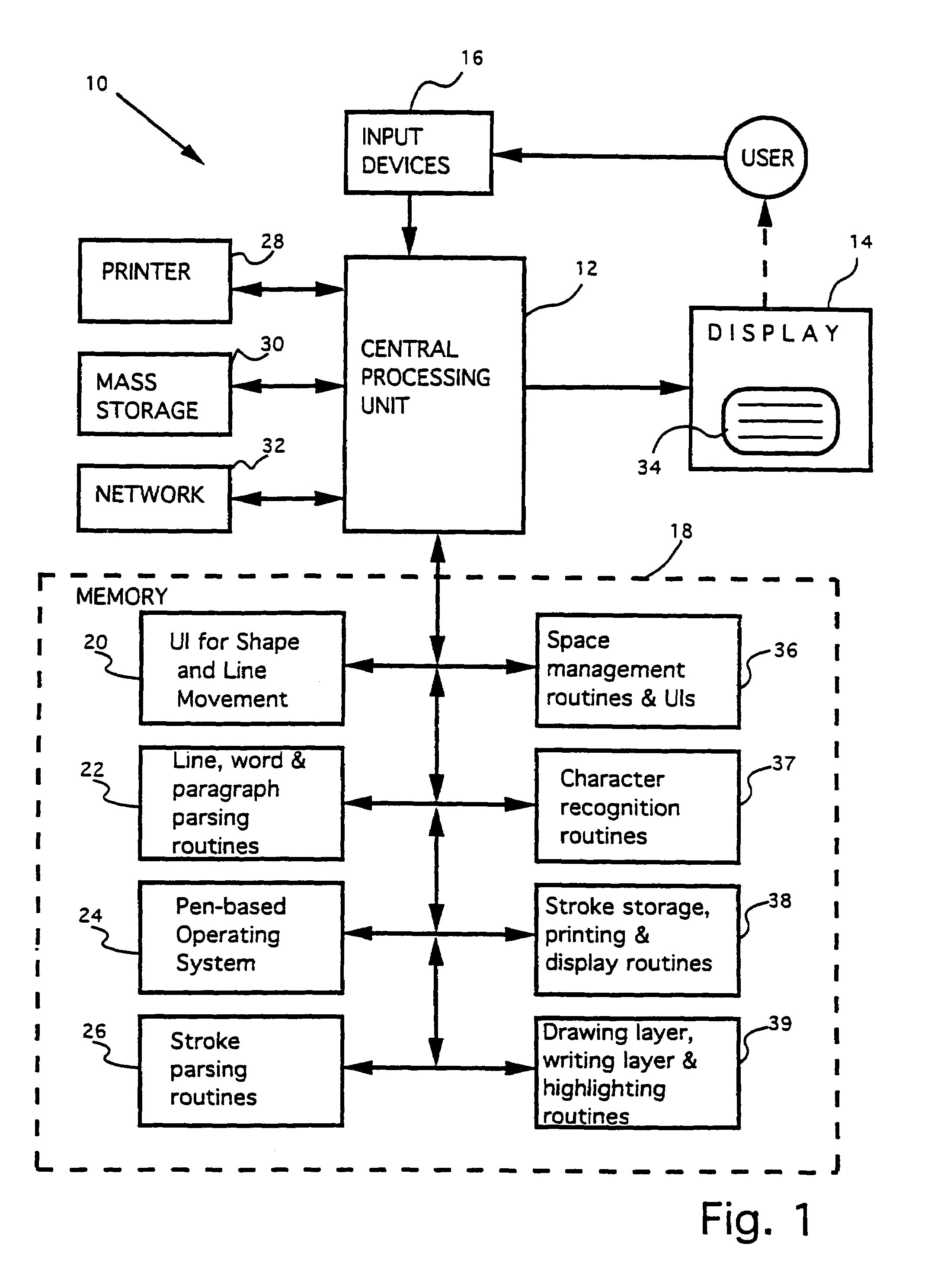System and methods for spacing, storing and recognizing electronic representations of handwriting, printing and drawings
a technology of electronic representation and pen-based input, applied in the field of pen-based computing, can solve the problems of difficult to recognize the correctness of bullet characters filled in with multiple strokes, the recognition of dashes and bullets commonly used in lists, and the inability to create programs for converting pen-based input into characters, etc., to achieve the effect of improving the overall system performance, improving performance, and being easy to manipula
- Summary
- Abstract
- Description
- Claims
- Application Information
AI Technical Summary
Benefits of technology
Problems solved by technology
Method used
Image
Examples
Embodiment Construction
[0042]In accordance with the present invention, an apparatus 10 for storing, manipulating and recognizing electronic representations of handwriting, printing, and drawings in accordance with the present invention is shown in FIG. 1. The apparatus 10 of the present invention comprises a central processing unit 12 (CPU) that couples with a display device 14, an input device 16, and a memory 18. The memory 18 preferably includes random access memory (RAM) and read-only memory (ROM). The CPU 12 is also coupled to a printer 28, mass storage 30, and a network 32 in a conventional manner. In an exemplary embodiment, the system 10 is an NCR 3125 pen-based computer. Those skilled in the art will realize the system 10 may also be any one of a variety of computers such as those manufactured and sold by IBM and Apple Computer.
[0043]Electronic ink stroke data is stored in the memory 18 along with program routines 20, 22, 26, 36, 37, 38, 39 and a pen-based operating system 24. The CPU 12, under t...
PUM
 Login to View More
Login to View More Abstract
Description
Claims
Application Information
 Login to View More
Login to View More - R&D
- Intellectual Property
- Life Sciences
- Materials
- Tech Scout
- Unparalleled Data Quality
- Higher Quality Content
- 60% Fewer Hallucinations
Browse by: Latest US Patents, China's latest patents, Technical Efficacy Thesaurus, Application Domain, Technology Topic, Popular Technical Reports.
© 2025 PatSnap. All rights reserved.Legal|Privacy policy|Modern Slavery Act Transparency Statement|Sitemap|About US| Contact US: help@patsnap.com



